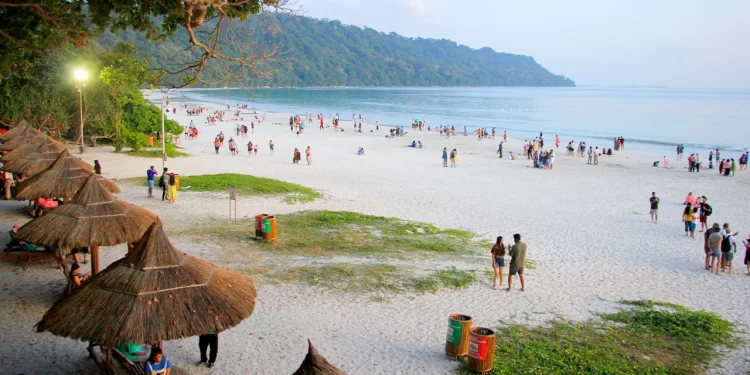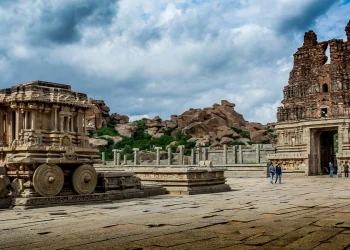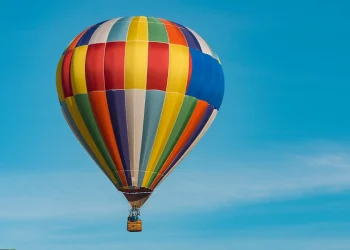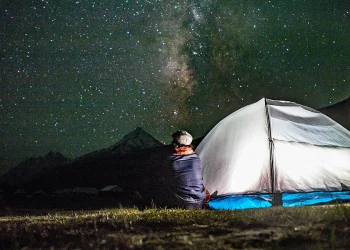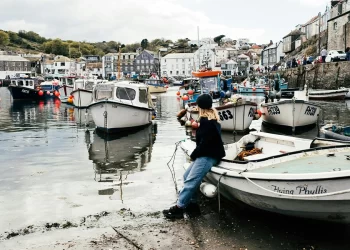‘And to the end of the walk, we will see an anemone with an entire family of clownfish.’ Said our guide, summing up the walking tour we had signed up on the rocky southern edge of Neil Island.
Wait. Did I hear it right? Clownfish?
I checked again, and our guide smilingly nodded, ‘The joys of walking on one of the most isolated islands of the country. One which is brimming with life at every point…’
Table of Contents
True. How could I deny? I was travelling in the Andaman Islands where every step was an eye-opener, every sight an enriched lesson in history, geography and zoology, and every discussion with any random passer-by a realisation – how different were these far-flung islands in the Bay of Bengal, yet how united were these isles by invisible entanglements with the mainland. The Andamans, in my brief sojourn, were a brilliant revelation that have added many a distinction, divergence and deed to the annals of India.
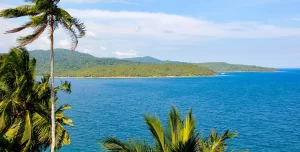
Where are the Andaman and Nicobar Islands?
You might have heard of the Andaman Sea that graces the western coastline of Thailand and Malaysia. The stunning islands of Phuket, Koh Lanta, Koh Lipe and Langkawi are embedded in the pristine waters of the Andaman Sea – to the western edge of the same waters lie the dripping line of islands that constitute the Andaman and Nicobar archipelago. (India’s southern most tip, the Indira Point lies at the end of the Nicobar Islands and is way closer to Indonesia, Malaysia and Thailand than to mainland India). You will need to take a flight from Kolkata or Chennai in India, though the tourism potential for the islands and proximity may soon see flights to south-east Asia.
Also Read: Top Spots For Birdwatching In India
Travellers normally do not relate India with stunner beaches – but the less frequented Andamans help refute this claim – their striking, crystal waters abounding in tropical life, from dolphins and dugongs to mantas and manatees, are world-class.
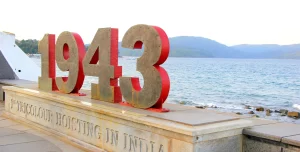
There are over 800 emerald islands in this chain, continental and volcanic islands, which are apparently the extension of the Arakan Yoma mountains of Myanmar in the Bay of Bengal – they are at once, volcanic, lush, covered with tropical rainforests, coral-reefed and fringed with dazzlingly white silicate beaches, pockmarked with gigantic limestone caverns, frothing with mud and active volcanoes and inhabited by aboriginals isolated for over 25 millennia – the islands are in a way, India’s response to the natural archipelagic extravaganza of south-east Asia, sans the touristy brouhaha and mass commercialization.
Its isolation has spared the over-population and decimation that has scoured the mainland and today, the Andamans are a treasure trove of wonders, thankfully preserved and well poised to be sustainably developed in the days to come.
It All Starts at Port Blair
The capital of the archipelago is Port Blair, well connected by flights and a fledgling cruise industry to the mainland. A lot of the monikers here remind us of the administrators of the East India Company (read Blair, Corbyn, Havelock, Neil) who nonetheless have added a dark chapter here during India’s long struggle for independence. The distance and isolation of Andaman was used to set up a penal colony – Kalapani – ¬housing convicts and freedom fighters akin to other infamous prison sites in the British empire including Tasmania’s Port Arthur, Norfolk Island and Bermuda.

Today, the Cellular Jail – constructed to house inmates – is a stark and mournful reminder of those dark decades when many a rebel were incarcerated, tortured and executed within its haunted walls. Despite its grand architecture designed as a star and topped with twin towers at the entrance, the Cellular Jail retains its infamy, but is perhaps the most visited site in the islands, with travellers paying their tribute to the fallen heroes of the past, and making a pilgrimage particularly to the cell where legendary fighter Veer Savarkar was imprisoned.
Also Read: These Landmarks Are A Must-See On Any Travel Bucket List
It was nonetheless declared a National Memorial in 1979 by the-then Prime Minister of India, Morarji Desai, to preserve as in Auschwitz and Dachau, the horrors of war, the struggles of independence, and the immensity of sacrifice made by generations of youth, that we remember a sliver of those pains that was paid as the price of freedom.
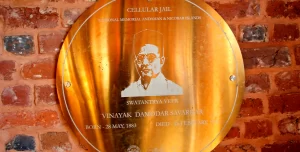
But not all of Andaman’s history is equally dark and dismal – for a brief period, these islands were taken over by the Indian National Army (INA) – Netaji Subhas Bose’s Azad Hind Fauj, and it was the first part of India that was declared independent, a landmark moment for a nation that fought for decades for its liberty.
The Cellular Jail has been converted into a museum and is a reservoir of hard, difficult memories – of men who lost their past and their future, of martyrs, of mutineers and mavericks who had only one absolute truth, that of their motherland. Unlucky, yet hallowed are those whose names are listed in these hollowed walls of the Cellular Jail; unluckier are those many more whose names and memories have forever been lost in the portals of time.
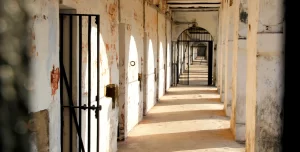
The Cellular Jail, thick with memories and phantasmagorias, is sure to stir the hearts of every traveller, and more so remind us of the heavy price paid for what we often take too easily for granted in the modern times. Outside the prison, a garden venerates a handful of the most popular prisoners of Port Blair, while farther down the Phoenix Bay, an immense tricolour flutters at Flag Point, with the year 1943 cast in large, golden blazing letters, that we do not forget the first time the tricolour was hoisted by Bose on this island so isolated, yet so intensely connected with the country’s Freedom movement against the imperialist British.
Andaman’s Chequered History
The British were not the first rulers of Andaman – though they remained the long-lasting last champion trouncing five other imperialist powers. The Andamans are strategically located, separating the Bay of Bengal from the Andaman Sea, lying on the prevailing trade routes connecting India to south east Asia. These islands were important pit-stops and were mentioned in the travels of Marco Polo, Zheng He and Hieun Tsang showcasing their importance.
Also Read: A Comprehensive Guide To Agra’s Treasures
The islands were used by the Chola kings to launch their attack on the Indonesian empire of Srivijaya – the only records attack by and Indian superpower abroad. Winding the records of history even further behind, the Andaman Islands were visited by the monkey army in their search for Sita. Intertwined with the Ramayana or the source land of the epic, the Andaman Islands were referred by the Malay as the land of Hanuman, or Handuman, which in turn corrupted to the present-day name of Andaman.
As for Nicobar, the name is apparently a rendition of the Tamil word, Nakkabaran, or the land of the naked, implying the local aboriginals of the islands.
Whatever be their etymology, the location of the islands was coveted. Their strategic location was the reason they were colonised by Danes, then the British and the Japanese, while Austria (under the powerful Habsburg Empire) and Italy remained keen as well, on the threshold to establish their own colonies and dip into the valuable spice trade in the region. Yet, the allure of spice-gold could not overcome the scars of Malaria and European internecine, colonial wars.
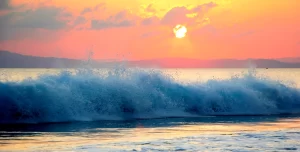
The Danes who once claimed the Nicobar Islands, and called it New Denmark, sold their rights to the British. After India’s independence, the British left though they desired to keep these islands as overseas territories to house the last of their administrative staff in India and Myanmar. But that didn’t work out, and India claimed the Andamans as a Union Territory, though only a handful of islands were given away for permanent settlement by the Indian government, leaving nature to reclaim hundreds of years of settlement history here.
Around Port Blair
Port Blair definitely has grisly history that will send shivers up your spine. But if you can leave behind these red letters of history, they are as pretty and balmy a paradise as it can get. Swayed by the tropical island breeze, Madonna could have jolly well penned her La Isla Bonita here.
Also Read: Master The Art Of Sustainable Travel
The population of the main Andaman Island is concentrated around Port Blair, as the rest of civilization blends very well with the infinite avenues of coconuts, palms, and areca nuts. There are indigenous tribes living inside the less visited jungles and while some such as the Jarawa, Onge and the Andamanese have been receptive to contact from outside, others such as the Shompen and the Sentinelese have been hostile to outsiders.
It is thought that the indigenous tribes arrived in two waves – first over 60,000 years ago when mankind expanded outside Africa, and hugging the coastline traversed all the way from the middle-east to south east Asia and then further down to Australia, and then again, at the peak of the last glacial age, when the sea levels were low enough to reduce the distance from the Mainland to these islands.
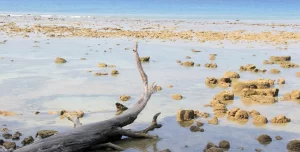
Not just human, animals have evolved as well, as in any island, the insular evolution leading to some very distinct species such as the Narcondam hornbill, Hume’s boobook, and the Nicobar Imperial pigeon among many other endemic species found nowhere else on Earth.
Port Blair is a very paltry tip of the iceberg of adventure comprising the large islands of South Andaman, Middle Andaman and North Andaman, traversed through the serpentine and not so well-maintained National Highway 04. (Andaman is the name of the archipelago as well as the three largest islands named above, with Port Blair lying on an eastern tip of of South Andaman).
Also Read: Exploring The Ancient Marvels: Oldest Surviving Places In The World
As in any lush tropical island, fecund with evolution, there are resplendent waterfalls, primeval mud volcanoes, immense cathedralesque limestone caves riddled with stalagmites and stalactites, all straddling gorgeous shorelines full of pristine beaches, mangrove forests, and coral reefs.
The prospect of exploring these yet-to-be-commercialized corners excites me as a traveller, and responsible well-balanced tourism with limited footprint can create a sustainable way of exploring this paradise, but I have also seen innumerable examples where we have got it wrong. That makes me wary and perhaps we are better off, leaving the islands undisturbed.
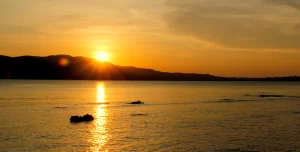
Within Port Blair, Corbyn’s Cove is a thin sliver of golden sands that makes for gorgeous sunsets; so does Chidiya Tapu, with its fascinating, serpentine road traversing lush green tropical rainforests.
The Zoo next to Chidiya Tapu is an excellent way to check the endemic flora and fauna of these islands, particularly the pastel-coloured Andaman Wood pigeons and the resplendent Nicobar pigeons. Closer to the City, are Ross Island, Aberdeen Clock Tower, Marina Park, Flag-point, Gandhi Park and Joggers Park, all of which can be covered in a day. There are countless islands nearby with Jolly Buoy and Rutland opening up for increased travel in recent times.
Tips
- Do your numismatical homework and watch out for the North Bay Lighthouse that is featured in an older version of the 20-rupee note, while the Cellular Jail is featured in a hard-to-find and valued 1 rupee coin from the late 1990s
- Have your fill of seafood and indulge in the choiciest (and heaviest) of lobsters, prawns and crabs – they won’t come any fresher and the value for money will beat anything you will have seen in India or South-east Asia
Havelock Island – The Diamond in the Jewel Box
Havelock is perhaps Andaman’s undisputed champion. A 2-hour ferry from Port Blair, it has everything to usher vacation euphoria with the infrastructure otherwise missing beyond Port Blair in the main islands. The island is ringed with coral reefs, and peppered with blazing white beaches.
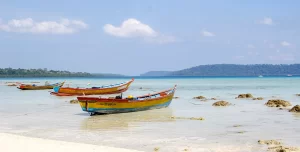
The beaches are formed from coral dust and is rich in silica, explaining the bleached beaches unlike golden or brown sands in the mainland. The other reason why the waters are so pristine is these islands are not impacted by the huge amounts of silt that are discharged from the many rivers of India, particularly after monsoon that leads to turbid waters on the mainland beaches. Havelock is a distinct world of its own – only Lakshadweep, India’s Maldives in the Arabian Sea comes anywhere close with their coral reefs and beaches. The low population and fishing has also ensured the sea waters are rich in life, while the sands are strewn with hermit crabs of all sizes and colour
Radhanagar Beach
Hire a scooter or get a chauffeured car to travel around in the island, that looks extensively green due to its forest cover or areca nut plantation. The chief beaches are Elephanta, Kalapathar and Radhanagar, the latter being the top draw, and rated consistently for years as India’s numero uno beach. What will delight you even further is Radhanagar’s label as a Blue Flag Beach.
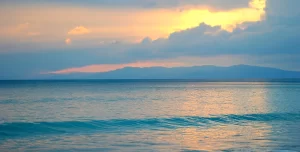
The Blue Flag is a certification given to beaches by the Foundation for Environmental Education (FEE). A beach that has been awarded the blue flag means that it meets the organisation’s standards of environmental management around water quality, safety, and public environmental education. It is in a away, the platinum standard for beaches, and Radhanagar is one of over a dozen (and increasing) list of Blue Flag beaches in India, including the likes of RIshikonda, Kovalam and Kasargod (with surprising omissions from either Goa or south Maharashtra, which have a long list of splendid beaches!)
Also Read: The Cave Temples Of Mumbai And Beyond
By Indian standards, I had to admit that Radhanagar was very well maintained, and spotlessly clean despite the tourism. It is every photographer’s wallpaper dream – fringed with palms, fecund with sea life and distinctly west-facing for gorgeous sunsets daubed in every pastel shade of pink, orange and red. Tourism in the Andamans is very meticulous and segmented – the fares are all standardised, and locations are classified as either sunrise hotspots (east facing beaches) or sunset vantage points (west facing beaches). While this means you need to share your beaches with the other tourists in the island, it also implies you can travel in the opposite direction and find a surprising slice of seclusion.
Elephanta is the hub of water-sports and snorkelling, while there are many scuba diving hotspots around the island. All-in-all, tourism is well organised and standardised. Food and accommodation is plenty across the budget, but if you really want the ultimate luxury, head to the Radhanagar Beach that also houses a Taj – the ultimate laurel of luxury in the wreath of hospitality.
Also Read: An Exciting Guide To The Most Extreme Places Of Earth
We can do a better job as both hosts and travellers – I found Kalapathar as beautiful as Radhanagar, though the location and length of the latter is definitely superior. Yet, the former was kept dirty – there were coconut husks (and even broken glasses) strewn in sections of the beach making me realise that Blue Flag et al can be a certification, an external validation, but cleanliness needs to come from increased education and if need be, penalisation until the drive to keep or beaches clean comes from within, as an internal compulsion.
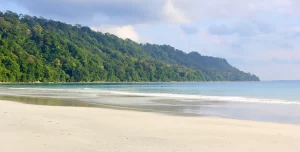
Nonetheless, Havelock was beautiful, leaving me to ask for more. There was tourism but the island was also extensively green with lesser houses and buildings I had expected. And I was only traversing the well-trodden touristy paths – once you step outside, there are many hidden corners to explore, charming outposts to claim your peace on the island.
Neil Island – The Fast-Growing Challenger
Many travellers end their tropical foray at Havelock, but if you have a day or two to spare, head over to Neil Island, younger sibling to Havelock and only a 30-minute ferry away. It is much smaller in size and scale, but is as beautiful with beaches sprinkled in almost every direction – Sitapur to the east, Laxmanpur to the west, and Bharatapur to the north. The latter is again a snorkelling paradise, while the others will provide you infinite shades of blue to get philosophical, write your poetry or sip your pina colada.
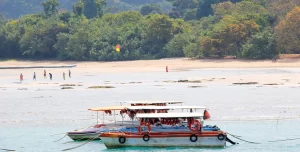
The sands here, similar to Havelock’s are fine talcum powdered ones, while the waters are transparent, gin coloured at low tide and teal-turquoise at high tide. Being less touristy than Havelock implies lesser infrastructure, but on the flip-side it also means more per capita nature left to yourself.
Once again, sunsets are stupendous, at Laxmanpur – the beach is extensive, fringed with sea mahua trees and sprawling with hermit crabs on the sands below, while white-bellied sea eagles glide as monarchs of the skies.
Natural Bridge and Reef Walk
One of the other wonders of Neil Island is its twin Natural bridges – limestone arches hollowed by wind and water erosion. Guided tours are offered at low tide to walk out onto the rock shelves and discover the infinity aquariums of the seas not with a snorkel or mask, but on barefoot. It is an experience of its own as you spot coral reefs – staghorn, brain, plate corals of various hues and spot neon tetras, zebra fish, angel fish and many other species in amazing flashy colours all the while on a walk! I have spotted the same while snorkelling in deep waters, but the same view on a walk was as unexpected as it was mind-boggling.
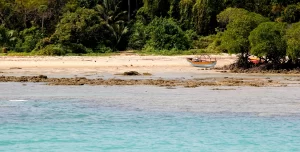
Besides the piscatory wonders, there are breathtaking crabs in chunky sizes and dazzling colours that will amaze you in this wonderland as you thank yourself for staying back at Neil. Towards the end of this walk, I found my adventurer’s climax when our guide took us to a sandy beach and less than 5 metres from the shoreline, showed us a healthy tentacled anemone, cradling a family of five Nemo clownfish. Photos and videos galore, we checked sea cucumbers, sea urchins and more kaleidoscope colours in the swirling fishes before heading back to shade, coconut water and views of the infinitely calming seas.
Do note that you are not allowed to pick up any shell or marine life from the islands and may be penalised if found. Souvenirs are available in plenty but do ask for an invoice in case your baggage is checked at the Airport.
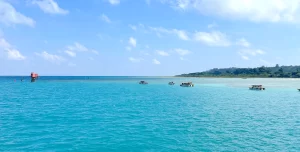
India’s Coastal Crown
The Andamans are unlike any beach or seaside sanctuary you will find in India. Goa has its vibe, Kerala its backwater fringed sands, and they are charmingly delightful in their own ways, but when it comes to maritime beauty, littoral wonders, aquatic enigmas and colours to describe placid wade-throughout-the-day waters, Andaman is unbeatable.
The tourism is yet to catch up with the fast paced and commercialised scale, abundant in south east Asia, such as Koh Samui, Krabi or Langkawi, but perhaps that is the bucolic, laid back charm, with lesser infrastructure but with undoubtedly no dearth of natural beauty.
Ayan Adak is a business consultant by profession and loves travelling, writing and photography in his spare time.


